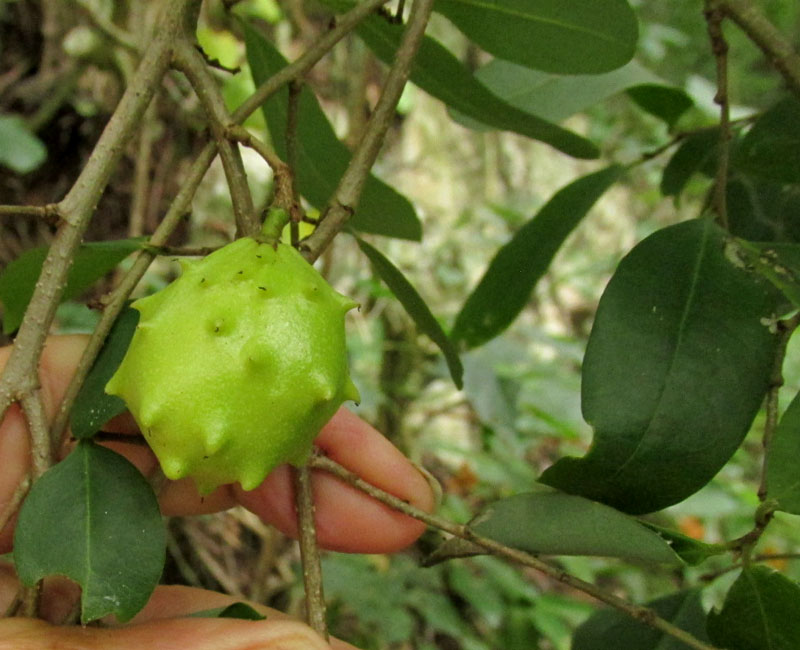Excerpts from Jim Conrad's
Naturalist Newsletter
entry from field notes dated October 10, 2022, taken about 3kms north of Gómez Farías, bushes along eroded gravel road descending toward Cañón el Azteca, Aztec Canyon, on the lower eastern slope of the Eastern Sierra Madres, El Cielo Biosphere Reserve, southern Tamaulipas state, MÉXICO; elevation about 300m (1000 ft), ± LAT. 23.04°N, LONG. 99.15°W
MEXICAN DWARF CHERIMOYA

Weeds, bushes and small trees formed walls along the gravel road into Cañón el Azteca. A spindly tree about 4m tall (13ft) bore the soft-prickled, egg-sized, immature, solitary fruit shown above. It looked like one of the fruits people call custard-apples, sugar-apples, soursop, and other names, all of the genus Annona. Some are native to lowland tropical Mexico, and throughout the world's tropics various species are planted around people's houses for the good-tasting fruits. But I'd not thought they could occur this far north. A close look at the stem showed features expected for an Annona:

The bud at the tip of the stem is brown-hairy and lacking scales. It's a "naked" bud. The bud's brown-hairy surface will slowly enlarge until it's the undersurface of a leaf. The hairiness extends onto the stem and large leaves remain sparsely hairy.

As seen at the right, the leaves -- shaped like a typical Annona leaf -- are paler on their lower surface than on their upper.
This little tree is sometimes called the Mexican Dwarf Cherimoya, ANNONA GLOBIFLORA. Of the three Mexican species of Annona occurring in the wild, it's the only one with more or less spherical fruits. It's endemic only to Mexico, from about here in southern Tamaulipas south through central and western Mexico to Chiapas, occurring commonly in tropical deciduous forest at elevations of 250-1200m (800-4000ft).
The mature fruits are described as small, tasty and full of seeds. A current page on the Internet sells ten seeds for US $26.25.
The 2021 work of S. Castro Guzmán and others entitled "Plantas medicinales de los Tének de San Francisco, Chontla, Veracruz, México" reports that an infusion of crushed leaves is used as a traditional treatment for nosebleed and nerves, and for bathing, in Veracruz.